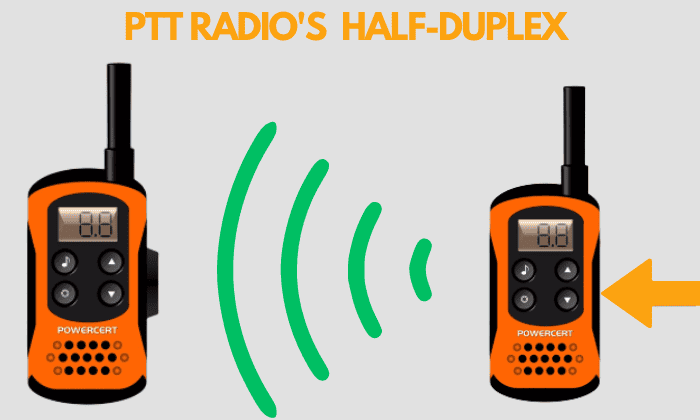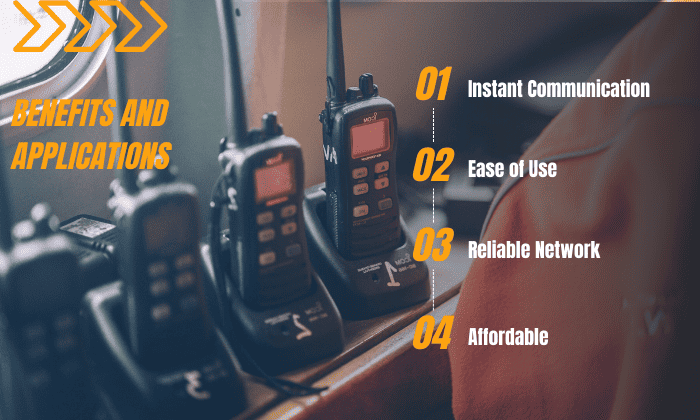In a digital age when smartphones proliferate, it’s undeniable that radio remains an icon and still a major player when it comes to communication. And while different types are available, one of the most common is a Push-to-Talk Radio.
From construction to transportation, different industries are utilizing the power of this device. Despite its popularity, many people are unaware of what does push to talk mean or what is a push-to-talk radio. If that’s the case for you, read on and learn something new!
Table of Contents
A Detailed Look at Push-to-talk Radio
This section will give a more comprehensive look at the fundamentals of push-to-talk radios to level up your knowledge.
1. Definition/Push to talk meaning
In a nutshell, push-to-talk refers to a voice communication mode using a press to talk button. It switches from reception to transmission, which is what connects two users. Essentially, it’s a technology that allows people to take turns sending messages without complicated dialing and typing.
2. History
The origin of the PTT term can be traced back to the humble beginnings of the two-way radio. It’s a reference to the actual PTT button, which you will need to press to be able to talk.
Push-to-talk radios started about eight decades ago. One of its earliest applications was during World War II. These days, it has grown significantly and can be seen in numerous industries like retail, hospitality, and governments.
Furthermore, from the traditional push-to-talk radios, the technology has evolved. PTT can now be integrated into other devices, including a smartphone.
3. Functions
Over the years since its introduction, the use of push-to-talk radios has expanded. It serves numerous functions, including the following:
- Security and Emergency Services: From security guards to firefighters, PTT is useful in time-critical situations. This can be a valuable tool in coordinating with the division that should respond to an emergency. It can be a savior when speed can spell the difference between life and death.
- Manufacturing and Storage: Production plants and storage facilities are big, making it difficult to communicate. This is another facet where PTT radios are used these days, making it easier to connect with others within the vicinity.
- Hospitality: Hotels, restaurants, and other hospitality businesses are also among the most common users of PTT radios. From cleaners to servers, PTT has a bunch of users in the hospitality sector.
- Retail: You might have already seen some salespeople working in large stores using PTT radios to communicate with the team.
- Construction: Communication is critical in construction sites, which can be prone to accidents. PTT radios make it easy to communicate and ask for help when necessary.
From supervisors who want to know what happened on the work site to managers following up on the duties of their personnel, PTT radios have many functions.
4. Types
PTT is a technology available on different devices, including two-way radios and walkie-talkies. You can even find it on many mobile phones.
How Does Push to Talk Work?
For a better understanding of how it works, let’s first differentiate between full and half-duplex transmission. In the case of a full duplex, two nodes can talk at the same time. On the other hand, in a half-duplex, only one channel can talk at a time. At its core, PTT is half-duplex.
In the case of radios, there’s a button on the side that you have to push to convert the mode of operation. This will allow you to use the radio either for transmission or reception—meaning, if you are speaking, you cannot receive and vice versa.
Meanwhile, you can also use PTT on computers. The premise remains the same, but the biggest difference is that it is desktop or web-based instead of using a radio or phone.
There’s also push-to-talk over cellular or POC. As the name implies, it requires a cellular service to function. This is a more modern alternative to those relying on radio networks, promising better communication.
The Benefits and Applications
As earlier mentioned, PTT is used in many industries. Some of its applications include security, emergency, manufacturing, warehousing, hospitality, retail, and construction. Meanwhile, it also offers a plethora of benefits, including the following:
- Instant Communication: Using PTT radios allows users to automatically connect to another party. The transmission happens in .3 seconds or even less. This makes it great for emergency services, among other applications.
- Ease of Use: There’s no need for extensive training to operate a PTT radio. Its use is straightforward, even for a first-timer. The button that you need to push is often big and hard to miss, and you’ll most probably find it on the side of the radio.
- Reliable Network: Prevent dropped calls or delayed messages when you communicate using PTT radio. There’s no need to establish a connection before you can send or receive a voice message.
- Affordable: Especially for businesses, using PTT radios is good because of their cost-effectiveness. There’s also no need to pay for monthly subscriptions.
Comparison With Other Communication Technologies
One of the alternatives to PTT radios is VOX, which stands for voice-operated switches. These have automatic switching, eliminating the need to press to change modes. However, a common problem with VOX is that it can activate even with minor sounds.
Meanwhile, when compared to cell phone communication, the latter is a full duplex. This means that two users can talk at the same time, unlike in a PTT wherein only one person can transmit.
How to Choose PTT Radio
The choices abound, but they’re not created equal. Here are some considerations as you narrow down your options:
- Range: Look at how far you can communicate using the radio. This should match the application, such as the size of the construction site where the device will be used.
- Power Output: Measured in watts, this is directly related to the range of the radio. The higher the wattage, the farther it can transmit.
- Durability: Consider the overall construction, which will determine how long it will last. This is especially important for outdoor use.
- Cost: Cheaper is not always better. It’s best to emphasize quality over cost.
To make your search even easier, some of the most popular PTT brands include Ericsson, Motorola, and Qualcomm. Meanwhile, you can expand the functionality of these brands with the help of National Two Way Radio accessories.
Frequently Asked Questions
What does PTT stand for?
PTT stands for Push-to-Talk radio, which uses half-duplex lines to facilitate communication between two parties. The new generation of PTT even has end-to-end encryption for security.
Is push to talk the same as walkie talkie?
No, push-to-talk is not the same as a walkie-talkie. Essentially, walkie-talkies are only two-way radios. On the other hand, push-to-talk is a broad category of communication systems. It can be incorporated on other devices beyond radios, such as smartphones.
Conclusion
This article talked about what is a push-to-talk radio and other things you must know, such as how it compares to other voice communication methods. We also gave a glimpse of its many applications, including emergency services, hospitality, and construction.
While it has been around for decades, people still use push to talk radios. This can be because of its many advantages, including instant communication, reliable network, and cost-effectiveness.

Hi, I am Amaro Frank – the Wind Up Radio’s content editor and writer. Working with Adam is so much fun, as his stories and experiences enrich my knowledge about radio communications and radio accessories. My main tasks in Wind Up Radio are building content and generating great articles on different topics around radio accessories.











